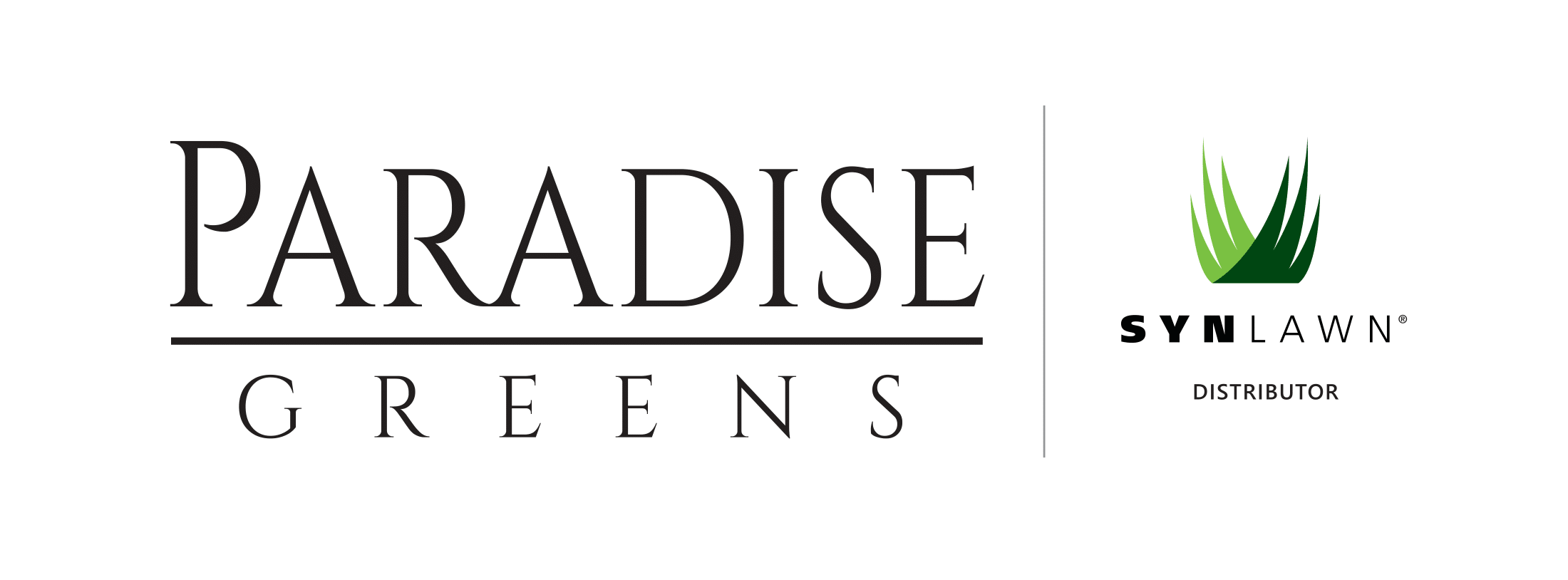The first introduction of artificial turf was rough. Skeptics had the preconceived misconception of the extremely “plastic” looking, carpet over concrete turf. And to be fair, first generation turf is similar to first generation products like AstroTurf. Yet, products like Paradise Greens Luxe XS make critics take a second look. Today, synthetic playing surfaces are better than ever!
In the early 21st century several brands involving synthetic playing surfaces overcame the limitations of Astroturf. Today there are innovations in the artificial turf industry. Yarns now use polyethylene (100% lead and heavy metal free, completely safe). Furthermore, 3rd generation turf uses monofilament. So it’s difficult to differentiate natural grass from Artificial Turf these days because Synthetic Turf looks so real. Yep, no more “fake” looking Synthetic Grass. Also, the benefit of no harsh chemicals, watering, or maintenance is appealing. Finally, Synthetic Fields are always ready to play on no matter what.
The Advance of Synthetic Playing Surfaces
Construction varies in detail. However, newer products try to produce synthetic playing surfaces that match real grass. This is happens by adding around an inch to two inches of crumb rubber. Typically sand mixes in around the Synthetic Grass blades, to provide some cushion upon impact. In the industry we know this as G-Max, or firmness, ratings.
The average soccer or football field uses 45,000 recycled tires (225,000 lbs) for crumb rubber infill. This spares the local landfill. How so? Well, the U.S. produces about 250 million scrap tires each year. Today, we recycle 80% of them. By the numbers we use:
- 30% mixed with asphalt for highways
- 30% for plastic products
- 15% find use for athletic surfaces, including Artificial Turf.
Artificial Turf is low maintenance. Also, it requires no herbicides or pesticides. In addition, it requires no watering or reseeding. No wonder BCS football teams took notice!
ExcelDrain and Artificial Turf Fields
It has superior resilience to environmental conditions and allows for the wear and tear of a multi use facility far better than that of a natural field. The most important advantage is use for every day, winter and summer. It will never get bald patches and doesn’t get muddy when it rains. In fact, Synthetic playing surfaces have superior drainage properties. This is especially true with modern systems like ExcelDrain.
ExcelDrain Turf Drain’s half inch design can collect and transport 16gallons per minute per foot of width. This is superior to 4 inches of stone (3-5 gallons of water per the same). This provides a superior rainfall evacuation rate reducing the wait time before using after rain.
ExcelDrain Turf Drain provides superior drainage. Also, it contains a high compressive strength structure. This allows water to flow under the turf, enhancing G-Max performance without changing ball action. In addition, it minimizes cause for player injury. With in a few hours of a heavy rainfall Synthetic Turf allows athletes to make use of a playing surface that if were natural would be inaccessible due to ground saturation.
Mixed Response in Europe
Newer Artificial Turf finds wide use in the US. However, Europe in response was mixed until recently when FIFA (International Federation of Association Football) and the UEFA (Union of European Football Association) approved Field Turf, one of the newer brands, for all games, including the World Cup tournaments. Premier League made football history August 8th, 2010 when Chelsea and Manchester United became the first teams to play a competitive match on a partially synthetic surface at Wembley.
The trade association of natural turf providers claim ground up tires are hazardous. They support this claim by pointing out tires are banned from many landfills. Yet, the reasons are misguided. For instance, tires are a breeding ground for mosquitoes. Also, they create a risk for serious fires that are hard to extinguish.
Charlie Ferer, President and CEO of Paradise Greens comments, “Just because turf is ‘natural’ does not mean it is environmentally harmless. Large amounts of fertilizer, herbicides and pesticides are put in use to keep a field looking great.
Natural Field Maintenance is Costly
Maintaining fields still requires the use of materials that may still leach. Also, using gas or diesel powered machines for mowing contributes to fossil fuel emissions. This has environmental impact. In addition, think of the large quantities of water necessary to keep grass healthy.”
It is most likely that, at end of life artificial turf is simply unusable. This is where the bulk of the rubber would go if not used for turf. But it is now in a form landfills prefer over intact tires. The rubber will not be break down by microorganisms in the landfill . Neither will it dissolve by water and stay forever. This is unlike most inorganic materials in landfills today.
Let Paradise Greens Help
If you are interested in Paradise Greens creating a perfect playing surface for you, or your local area high school please call 480.586.0655 to speak with a sales professional, or visit us online at www.paradisegreens.com.
